
The Best Hiking Boots For Men & Women (2023)
Disclaimer: All recommended products have been independently research and reviewed. As an Amazon Associate, I earn from qualifying purchases.
Hiking is one of the best ways to enjoy the great outdoors. You can discover epic destinations while getting a killer workout in simultaneously. Whether you’re planning a day hike or a multi-day backpacking trip, having the right gear can make or break your trip.
A great pair of hiking boots is essential for any hiker. They protect your feet from rough terrain and prevent potential injuries. The last thing you want in the backcountry is a twisted ankle or oozing blisters. Additionally, they provide the support and stability you need to tackle challenging trails.
With so many options on the market, choosing the best hiking boot for your needs can be overwhelming. In this blog post, I’ll review some of the best hiking boots available for different purposes. This will help you make an informed decision on the best boots for your next outdoor adventure!
The Best Hiking Boots Overall: Salomon Quest 4 GTX | Women’s & Men’s
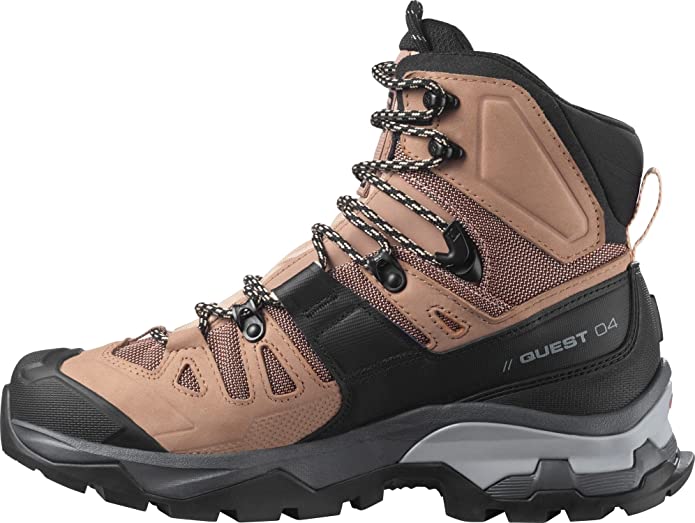
Specs:
Weight: 2.9 lbs per pair
Waterproofing: Yes
Width: Standard
Upper Material: Full Grain Leather
Pros:
- One of the most comfortable, durable, and supportive hiking boots out there.
- Excellent traction that is perfect for scrambling and hiking on loose terrain
- Supburb ankle support
- Shields your feet from feeling harsh terrain
Cons:
- Heavy.
- Can be sweaty in hot and dry climates
- A few customer reviews mentioned the shoe laces breaking after minimal use. Buying a more robust pair of laces for longer hikes is a good idea.
Why You Should Consider Buying
If you’re looking for one excellent hiking boot that (nearly) does it all, check out the Salomon Quest 4 GTX. It’s SUPER comfortable, making walking on any trail type pleasant. These boots really stand out on challenging terrain and backpacking trips. The enhanced support and stability help prevent foot strain while carrying heavy backpacks. Solomon’s All Terrain Contagrip® provides excellent traction and a secure grip on loose terrain and while scrambling. The EnergyCell AVA Foam Midsole protects your feet from feeling the impact of rough terrain. Additionally, the Solomon Quest 4 GTX has one of the highest ratings for being water resistant. It has a 6-inch flood height which will protect your feet while crossing small streams.
Possible Reasons to Pass
If you hike in hot and dry climates or stick to easy trails without rough terrain, better options are available. While excellent for Colorado’s high country, the Solomon Quest 4 GTX can cause sweaty feet while hiking in hot and arid regions such as Utah. Additionally, if you primarily hike on easy trails with smooth terrain, you’re better off with lighter shoes. The Solomon Quest 4 GTX is on the heavier side. While hiking rough terrain, the extra protection is worth the tradeoff in weight. However, that isn’t necessary on easy trails. If either of these apply to you, don’t worry. I’ll cover boots that better fit your needs later in the article
Check Prices on Amazon: Women’s | Men’s
Best Budget Hiking Boots: Merrell Moab 2 Mid GTX | Women’s & Men’s
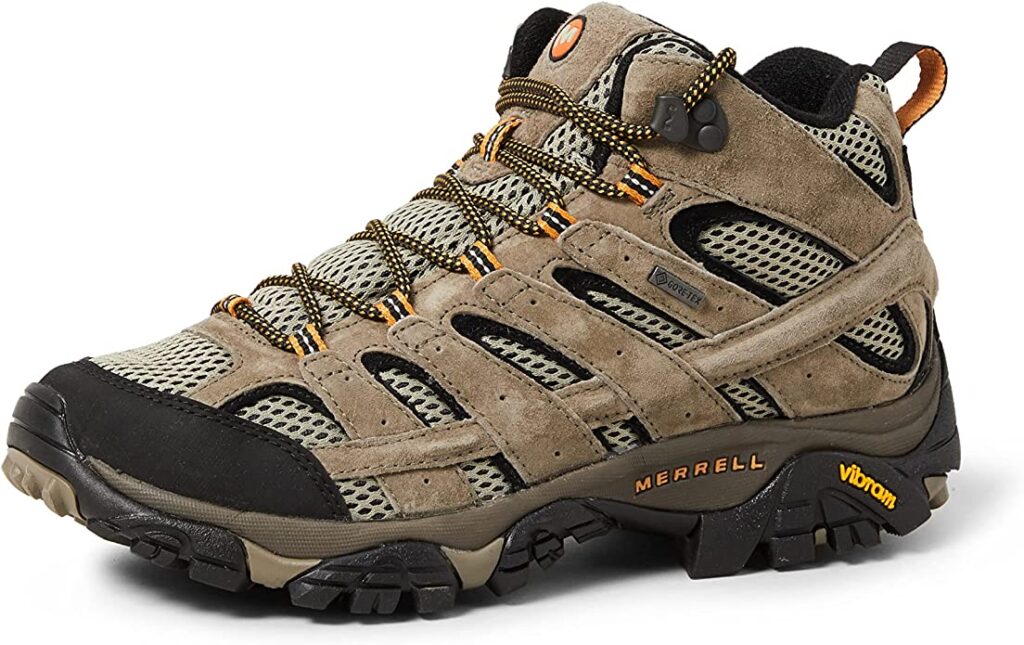
Specs:
Weight: 2.4 lbs per pair
Waterproofing: Yes
Width: Medium and wide available
Upper Material: Breathable mesh and suede
Pros:
- Durable
- Great traction
- Breathable
- Stylish
- Great ankle support
Cons:
- More ‘water-resistant’ than waterproof
- Medium support
- Not as much cushioning as more premium boots
Why You Should Consider Buying
The Merrell Moab 2 has been a long-time crowd favorite for a good reason. It’s durable, breathable, and provides excellent traction for a relatively low price. It’s built for cooler weather and rough terrain, making them great budget boots for day hikes in the Rockies. You can expect an impressive grip on loose terrain and while scrambling. The mid-rise boots provide additional ankle support, giving them an edge over the low-rise version (unless trail running is your thing!). The Merrell Moab 2’s are stylish and have several colorways to choose from. They’re popular with younger hikers who don’t require additional support.
Possible Reasons to Pass
If you have a condition requiring more support, you should get a more supportive shoe designed for your needs. At the very least, try the shoes on in person and walk around in them before purchasing.
The Merrell Moab 2 boots are listed as waterproof. However, many people report otherwise. I think “water-resistant” is more accurate. There are better boots available for hiking in snow, rain, or clearing water.
If you primarily hike in hot climates, skip this and move down to the best boots for hot and dry climates section.
Check Prices on Amazon: Women’s | Men’s
Best Lightweight Hiking Boots: Danner 2650 mid GTX | Women’s & Men’s

Specs:
Weight: 1.75 lbs per pair
Waterproofing: Moderately water-resistant
Width: Medium
Upper Material: Suede and textile
Pros
- Lightweight
- Comfortable
- Durable
- Good traction
- Stylish. Can be used for casual wear.
Cons
- Lack of ankle and arch support
- Expensive
- Poor waterproofing
- Better options available for wet climates
- Not the best choice for backpacking
Why You Should Consider Buying
The Danner 2650 Mid GTX are the perfect lightweight boots for easy-to-moderate day hikes. Expect ultimate comfort paired with good performance. The Vibram 460 outsole provides exceptional traction on a variety of terrains. You’ll feel secure on rocky trails to slippery slopes.
One of the biggest benefits of the Danner 2650 Mid GTX is how comfortable they are. They have a cushioning OrthoLite footbed that absorbs shock and reduces fatigue. The midsole provides added support and stability.
Additionally, the Danner 2650 Mid GTX simply looks nice. You can wear these around town after your hike or really, whenever. They’re a good choice for stylish hikers who like taking photos of their adventures.
They’re crafted with premium materials that are both rugged and abrasion resistant. The upper is made from high-quality suede combined with breathable textile. The Danner 2650 Mid GTX can withstand the wear and tear of regular use.
Possible Reasons to Pass
Although the Danner 2650 Mid GTX is advertised as waterproof, that doesn’t seem to be the case. Better options are available if you hike in wet environments or need to clear puddles or streams. The boots are low-rise, making it easy for water to enter from the top.
These boots are not built for multi-day backpacking trips or rugged mountaineering. You’ll want a heavier, more performance-packed boot for more intense trips.
Check Prices on Amazon: Women’s | Men’s
The Best Hiking Boots for Hot and Dry Climates: Adidas Terrex Free Hiker 2 | Women’s & Men’s
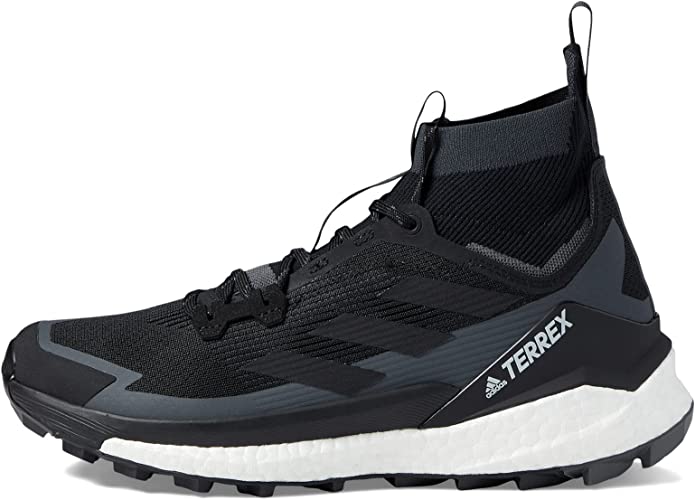
Specs
Weight: 1.9 lbs per pair
Waterproofing: No
Width: Normal
Upper Material: Abrasion-resistant mesh upper
Pros
- Super comfortable (after break-in)
- Lightweight
- Excellent traction, even on rough or slippery terrain
- Supportive collar
- Flexible
- Stylish
Cons
- Break-in period required
- Difficult to put on
- Not for all-seasons
- Not for wet weather
- Not for technical hiking
Why You Should Consider Buying
The Adidas Terrex Free Hiker 2 is specifically designed for hot and dry climates. They’re breathable, lightweight, comfortable, and durable. The Primeknit upper allows excellent air circulation, which prevents overheating and sweat buildup.
Wearers report the Adidas Terrex Free Hiker 2 as being incredibly comfortable. Heavenly even. The midsole features Adidas’ signature Boost technology, providing responsive cushioning and support. The sock-like construction ensures a snug and cushioning fit. Of course, this is after the required break-in period. Don’t expect this freeing level of comfort right out of the box.
Plan to hike on loose terrain? Don’t worry. The Continental rubber outsole provides excellent traction on a variety of surfaces. These boots are killer on a typical (and dry) mountain trail.
In addition to hiking, the Adidas Terrex Free Hiker 2 makes a stylish street shoe. Adidas makes functional AND cool shoes, and these are no exception. There are many colors to choose from, and you’re sure to find one that matches your style.
Possible Reasons to Pass
If you need boots that are waterproof or work well in winter, look elsewhere. As I mentioned, the Adidas Terrex Free Hiker 2 is designed for hot and dry climates. They do not hold up well in wet or cold conditions.
There is a version with GORE-TEX (waterproofing material) available. However, people still report issues with their feet getting wet with it. GORE-TEX also makes boots heavier and less breathable. As a result, the GTX version of the Adidas Terrex Free Hiker 2 becomes less effective in hot and dry climates.
The Best Boots for Technical Hikes: La Sportiva Aequilibrium ST GTX | Women’s & Men’s
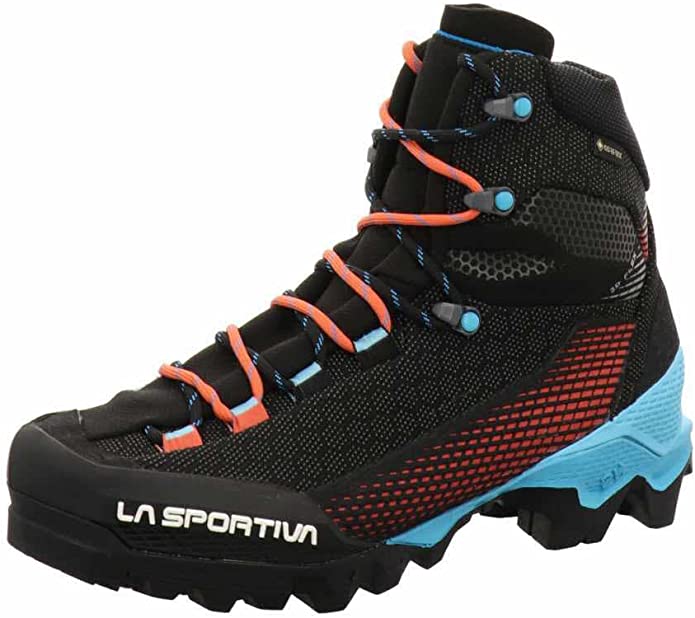
Specs
Weight: 2.8 lbs per pair
Waterproofing: Yes
Width: On the narrow side
Upper Material: Nylon Honeycomb Gaurd
Pros
- Incredible traction and grip
- Comfortable
- Completely waterproof
- Lightweight for mountaineering boots
Cons:
- Overkill for simple day hikes
- Lacking calf support
- Can take time to get used to
Why You Should Consider Buying
The La Sportiva Aequilibrium ST GTX is the best boot for hard-core mountaineering. They provide an incredible grip that makes challenging ascents and descents a breeze. What’s even more remarkable is how lightweight they are compared to similar boots. They’re only 2.8 lbs per pair, helping you be light and fast on your feet.
These boots are completely waterproof. Your feet will stay dry and warm even while trekking in harsh alpine snow. This is incredibly important, especially because snow can stick around all year at high altitudes. In addition to mountaineering, they’re incredible for winter hiking in general.
The grippy outsole ensures you won’t slip around on wet or loose terrain. In fact, they’re quite sticky on all surfaces. They’re a must for climbing, bouldering, and intense scrambling. They provide the traction and safety you’ll need on high-altitude terrain.
Possible Reasons to Pass
The La Sportiva Aequilibrium ST GTX hiking boots are overkill for simple day hikes. You can pass on these boots if you’re not climbing, bouldering, mountaineering, etc.
Check Prices on Amazon: Women’s | Men’s
The Best Boots for Hiking in Snow and Ice: The North Face Chilkat 400 Insulated Snowboot | Women’s & Men’s
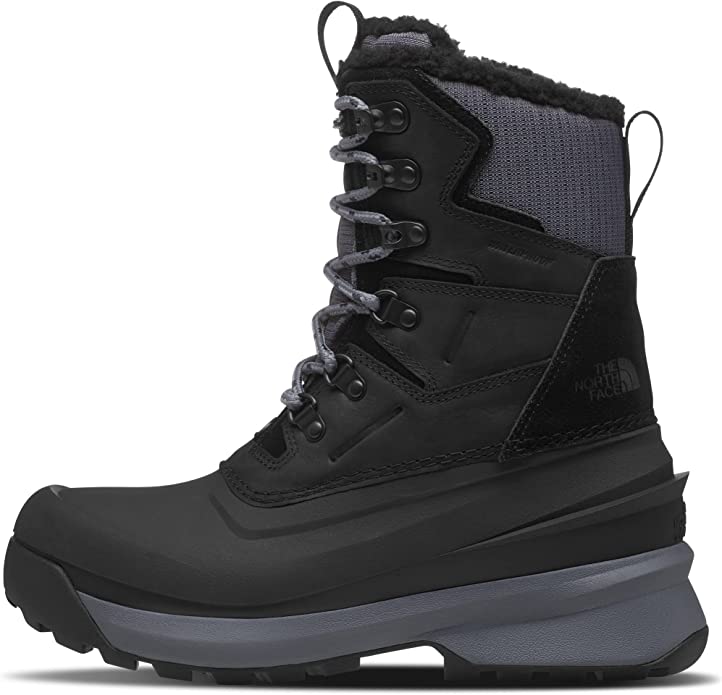
Specs
Weight: 1.6 lbs
Waterproofing: Yes
Width: Narrow to average
Upper Material: Full grain waterproof leather and suede
Pros
- Lightweight
- Waterproof
- Keeps feet warm
- Comfortable
- Reasonably priced
- Great traction
Cons
- Too warm to wear above freezing
- Not a year-round boot
- Possibly tight on wider feet
- More premium boots are needed for temperatures less than -40° F
- Gaiters are needed for snow deeper than 8 inches
Why You Should Consider Buying
The North Face Chilkat 400 is one of the most well-rounded winter hiking boots. It provides warmth, comfort, and durability in snowy conditions for a reasonable price.
You’ll appreciate the additional traction while hiking on mountainous winter terrain. The Chilkat boot’s surface control rubber outsole grips to slippery surfaces with ease. This is especially useful when hiking on snow or ice.
Your feet will stay warm if you’re not hiking in temperatures less than -40° F. 200 grams of patented Heatseeker insulation line the North Face Chilkat 400. The waterproof suede upper and seam-sealed construction keep water out. This thoughtful, well-made design will keep your feet warm and dry.
Pair these boots with thick wool socks and tall gaiters for maximum warmth. Get a half-size larger than you typically wear to provide more space for ultra-thick socks. A pair of gaiters will extend your height clearance for stomping around in the snow. Accidentally step in thigh-high snow? The gaiters will keep it out of your boots.
I’m sure you can see why the North Face Chilkat 400 makes an excellent winter hiking boot. Your feet will stay warm, dry, and comfortable. You’ll have the traction needed to traverse icy and rocky terrain. More specialized winter hiking boots are out there but will come with a higher price tag. These are a great starting point for your research.
Possible Reasons to Pass
Are you living in or planning to visit one of the coldest and harshest climates, such as northern Alaska? If so, invest in more heavy-duty winter boots. Although the Northface Chilkat is perfect for most winter hiking, even taller and warmer boots are available. However, expect an even higher price tag to match the same quality.
TDLR: Unless you’re hiking in temperatures lower than -40° F or snow deeper than 8 inches, these boots will work great! Get a solid pair of gaiters for deeper snow, and you’ll be good.
Check Prices on Amazon: Women’s | Men’s
Final Notes
The best hiking boots for you will depend on the terrain and climate you hike in and your personal style and fit preferences. Although there isn’t a one-size-fits-all solution for all trails or people, there are certain things to look for when choosing a boot.
Before purchasing, ask yourself: Do these boots fit the needs of the trail or activity on which I plan to use them? Will I need to buy additional boots for other circumstances (i.e., a warm, waterproof pair and a breathable summer pair)? Will a more generalized pair fit my needs? Etc.
No matter the hiking boot you choose, make sure you love the fit before buying or taking off the tags. Do your research first and check the reviews. Even if a shoe looks great brand new, you want insight from other buyers on how the boots have held up over time. The last thing you want is for your shoes to fall apart while on a trip in the backcountry.
What tips do you have for buying hiking boots? Is there a particular pair that you love? Please share them in the comments below!
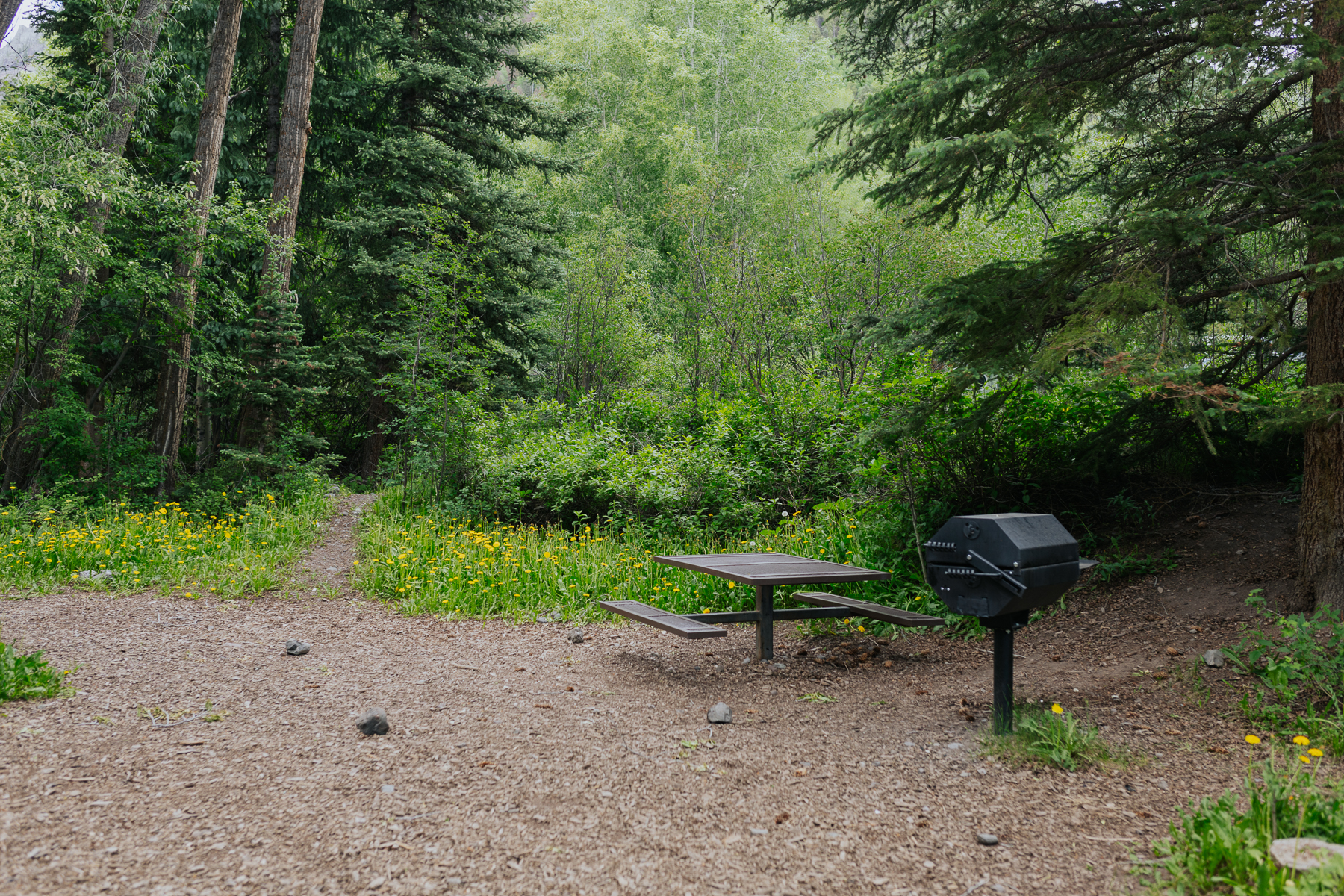
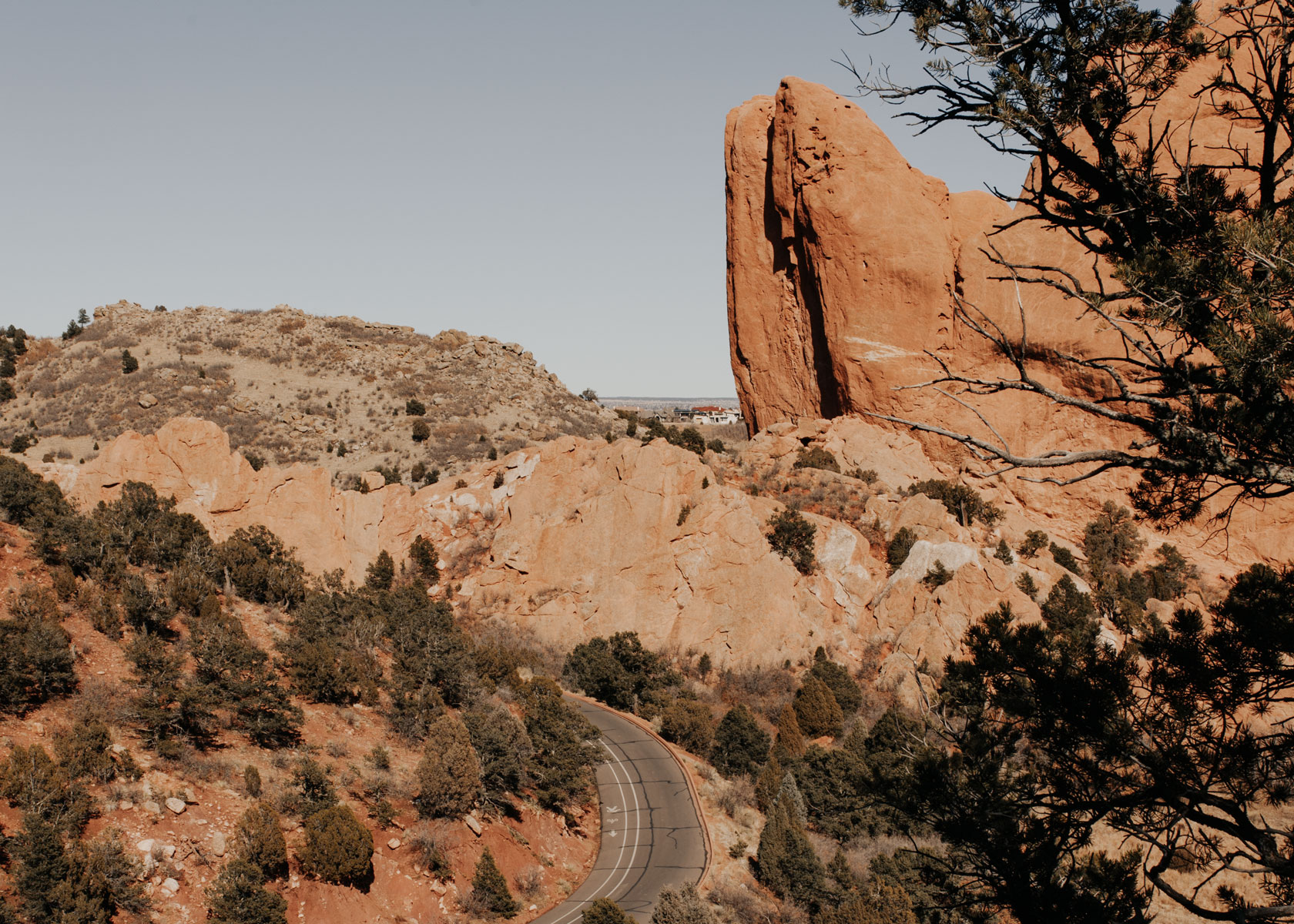


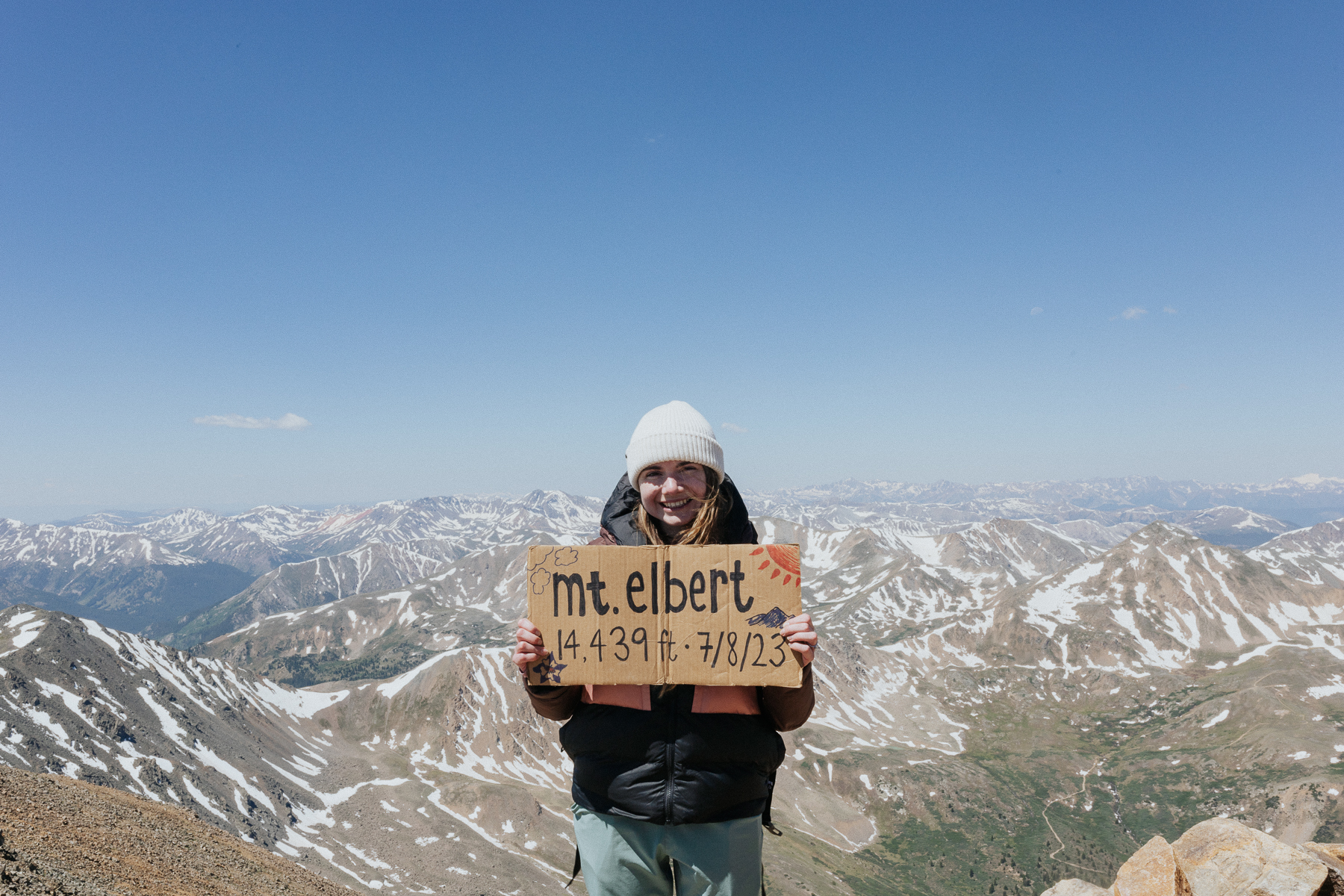
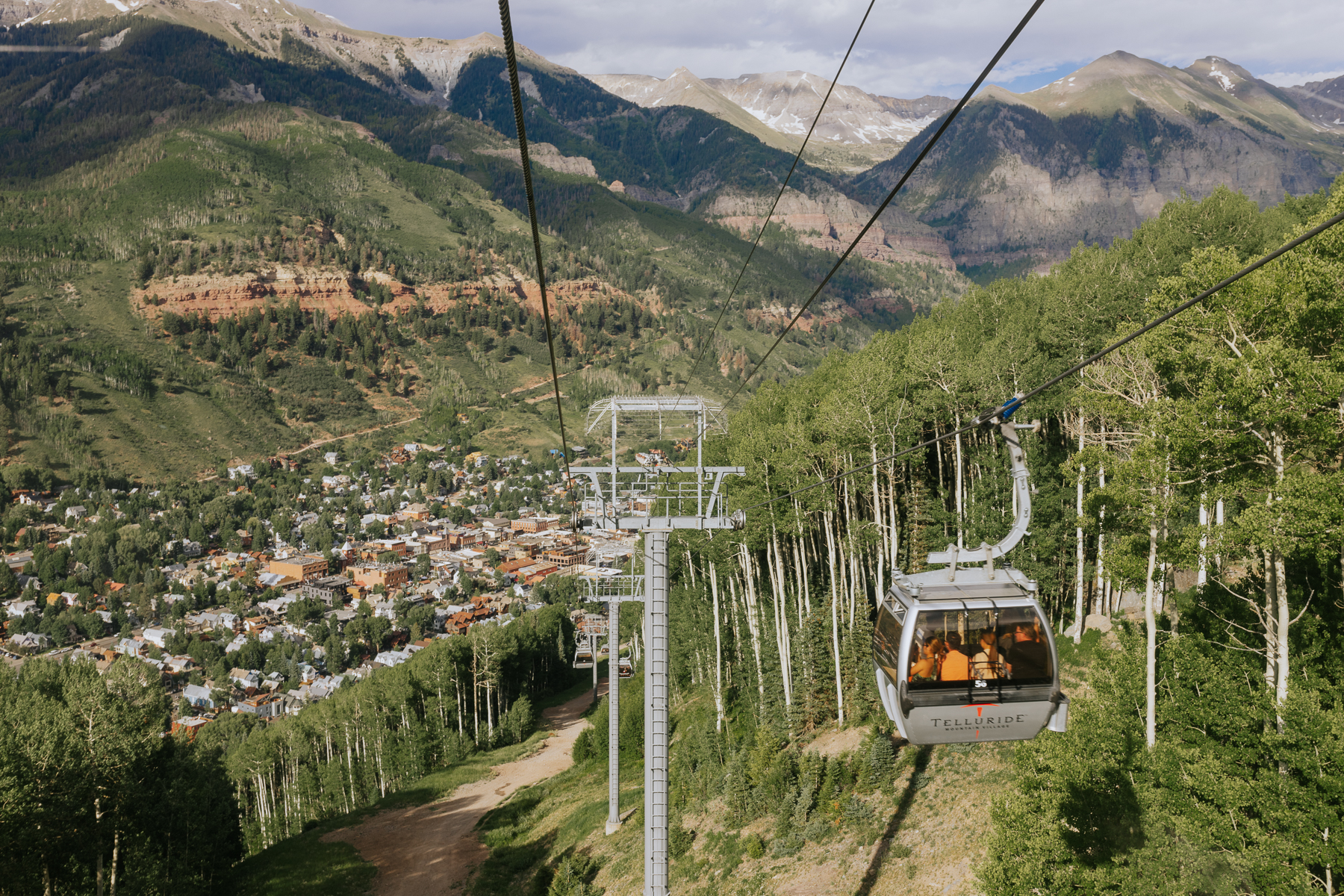
[close]
Comments